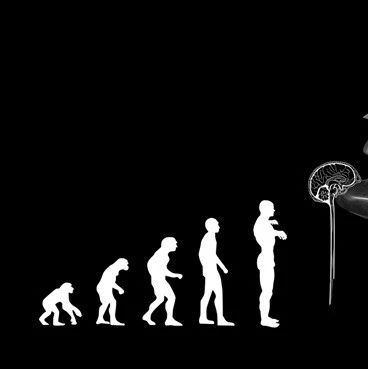导读:人们相信机器人迟早会拥有“触觉”,科学家们竞相研究各种压力传感器和先进材料,希望早日给它们穿上触感皮肤。美国匹兹堡大学和麻省理工学院的化学家另辟蹊径,演示了一种会自动收缩舒张的BZ凝胶,施加一定的机械压力后,原本不跳动的BZ凝胶可再次恢复跳动,就像医疗中的心肺复苏术那样。

人们相信机器人迟早会拥有“触觉”,科学家们竞相研究各种压力传感器和先进材料,希望早日给它们穿上触感皮肤。据物理学家组织网3月30日(北京时间)报道,美国匹兹堡大学和麻省理工学院的化学家另辟蹊径,演示了一种会自动收缩舒张的BZ凝胶,施加一定的机械压力后,原本不跳动的BZ凝胶可再次恢复跳动,就像医疗中的心肺复苏术那样。研究人员指出,这种特性很少有材料能模仿,因而具有广泛的应用前景,有助于进一步研究能感知机械刺激和化学反应的先进材料。相关论文发表在3月26日的《先进功能材料》上。
BZ反应是前苏联生物化学家贝洛索夫和生物物理学家扎鲍廷斯基先后发现的一种化学振荡现象,反应中溶液交替呈现出两种颜色。基于BZ振荡反应的BZ凝胶在上世纪90年代末首次制造出来,这种胶在没有任何外部刺激的情况下也会表现出有节律地收缩和舒张,在适当的条件下把一块BZ凝胶放在盘子里,它会如同一颗跳动着的心脏。
匹兹堡大学斯旺森工程学院化学与石油工程教授安娜·芭拉茨领导的研究小组对BZ胶的性质提出了预测。芭拉茨认为,通过向不再振荡的BZ胶施加一定的机械压力,其能再次恢复振荡。麻省理工学院的研究人员证实了这一推断,他们给BZ胶施加一定的机械压力,超过压力临界值时就能引发化学振荡。
“人类皮肤的某个部位变形或受伤,会向大脑发出信号。这种胶很像人类皮肤。”芭拉茨解释说,“造出像人类那样有感知能力的仿真皮肤是机器人技术领域的圣杯。”
BZ凝胶还有更多应用有待开发,如自动运输智能表面。芭拉茨说,此外,还可以安装在各种工具仪器上作为小型压力传感器,只要查看它们会不会跳动,就能判断出各种表面影响力。

Mechanical Resuscitation of Chemical Oscillations in Belousov–Zhabotinsky Gels
Chen, Irene Chou; Kuksenok, Olga; Yashin, Victor V.; Balazs, Anna C.; Van Vliet, Krystyn J.
The conversion of mechanical to chemical energy is a natural phenomenon that few synthetic materials have been able to mimic robustly. The first demonstration of mechanical triggering of Belousov–Zhabotinsky (BZ) oscillations is presented in N-isopropylacrylamide-co-Ru(bpy)3 gels for which the oscillatory nature of the BZ reaction can be visualized via periodic changes in color. It is demonstrated that BZ oscillations can be induced by the application of compressive stress to gels in which the BZ reaction has attained a steady-state upon depletion of reagents. Such macroscopic compression physically increases the volume fraction of polymer to which the Ru(bpy)3 catalyst is grafted and triggers BZ oscillations by utilizing unreacted reagents in the aqueous solution, thus effectively resuscitating and extending the functionality of these oscillatory gels. The applied stress and the initial concentrations of malonic acid are varied to show that there is a critical stress required to trigger and restore these oscillations, and that the period and amplitude of oscillation are tunable. Leveraging this capacity to restore the functionality of the material via applied pressure, sensor applications comprising discrete BZ gels, which are capable of both visually indicating the origin of mechanical loading and transmitting this signal away from the deformation site, are demonstrated. Mechanical resuscitation of such chemical oscillations affords novel approaches to creating pressure sensors based on self-oscillating gels.
文献链接:https://onlinelibrary.wiley.com/doi/10.1002/adfm.201103036/abstract








